In October of this year I was lucky enough to visit my wife’s hometown of Saijo, Japan, on the island of Shikoku. Being on the smallest of the main islands of Japan, we were really in the ‘inaka’ (the sticks), and that always makes for some authentic fun.
Some History
Autumn festivals in Japan are much like autumn festivals all over the world, they are harvest festivals. They exist to celebrate the harvest and pray to the gods for an abundant festival next year. Japan has two main religions, the native Shinto religion and Buddhism, which was imported from China. The festivals all stem from Shintoism, which is an animistic religion much like a Native American or African religion. There are gods in everything and you pray to the god that is in charge of what you need. Studying for a test? Go to the shrine with the gods of education.
This festival actually starts at the shrine that I was married at, and my wife’s parents were married at. They “take” the god from the shrine and put him or her into a portable small shrine (which you see below in the river) and carry it throughout town. Each neighborhood has their own Danjiri (the wooden portable shrines). They use these throughout the festival to show their strength and prowess to the gods (most of the time they are carrying these one-ton beasts). Each one of these Danjiri’s run about $200,000 to build. The small town of Saijo, population 20,000 people has 77 of these guys. Additionally, there are 5 Mikoshi, the larger portable shrines on large wooden wheels. These run about $300,000. The entire town, other than gas stations and supermarkets, shuts down. The joke is that anyone from Saijo who works in another town has a relative die each year around October, so they can get the day off and attend the festival.
Part 1 – Middle of the Night
The festival really gets going around 4 a.m. About midnight, the neighborhoods start rolling their Danjiri toward the open field next to a smaller shrine. Making the way here always gets you in the mood. The Taiko drums are banging, people are partying and drinking, and it starts getting fun.
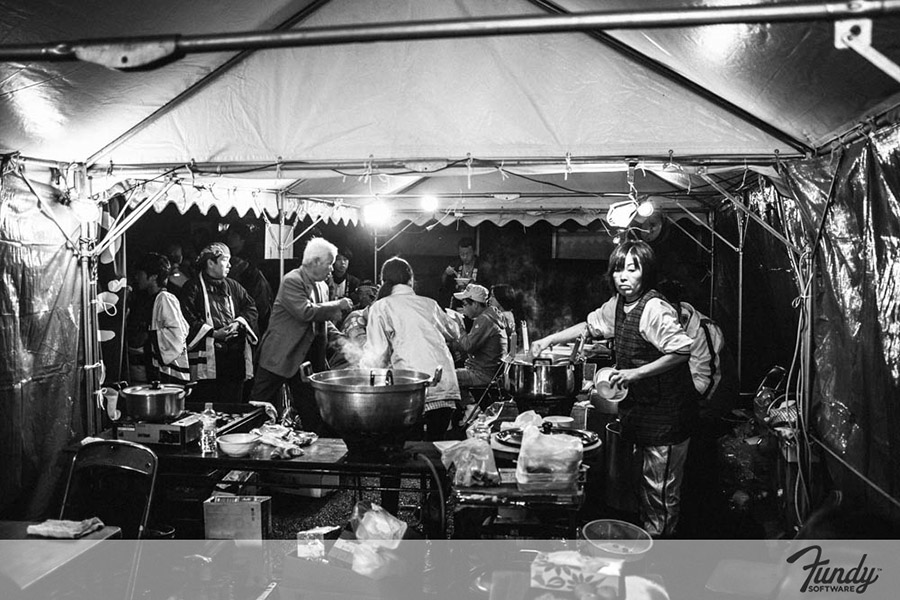
Small tent selling Udon. The kids and I had some at 4 a.m.
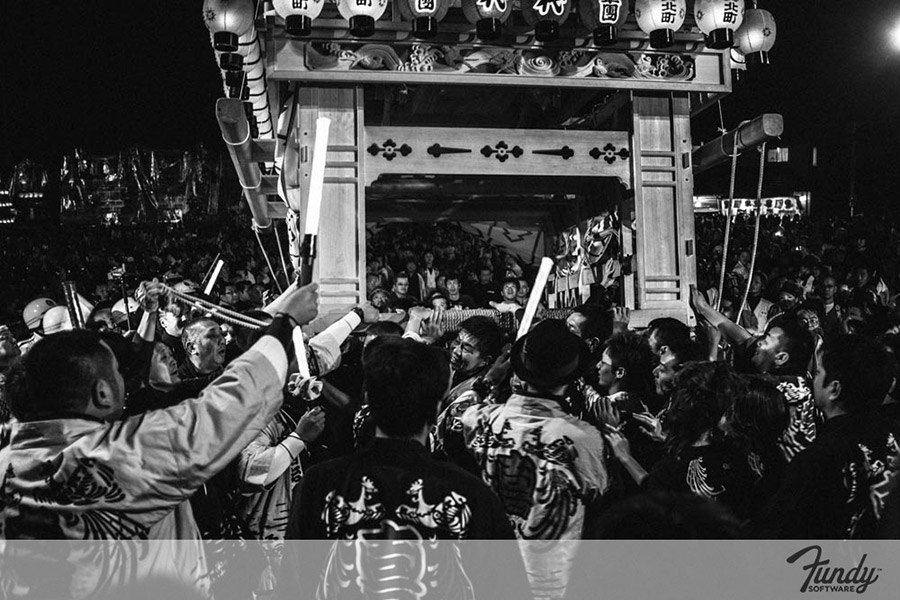
One of the neighborhoods lifting their shrine high into the air chanting away.
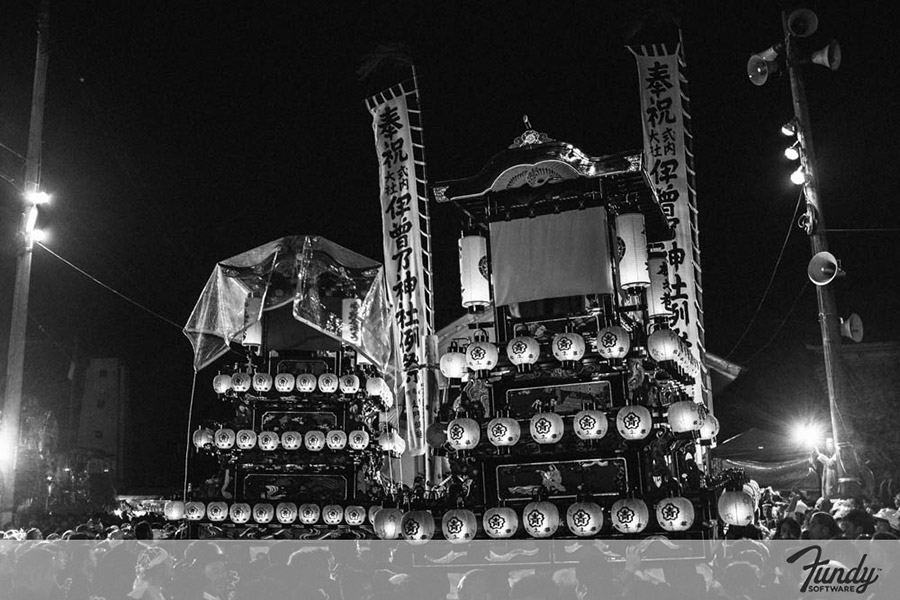
Two Danjiri’s being held up next to each other in the middle of the night.
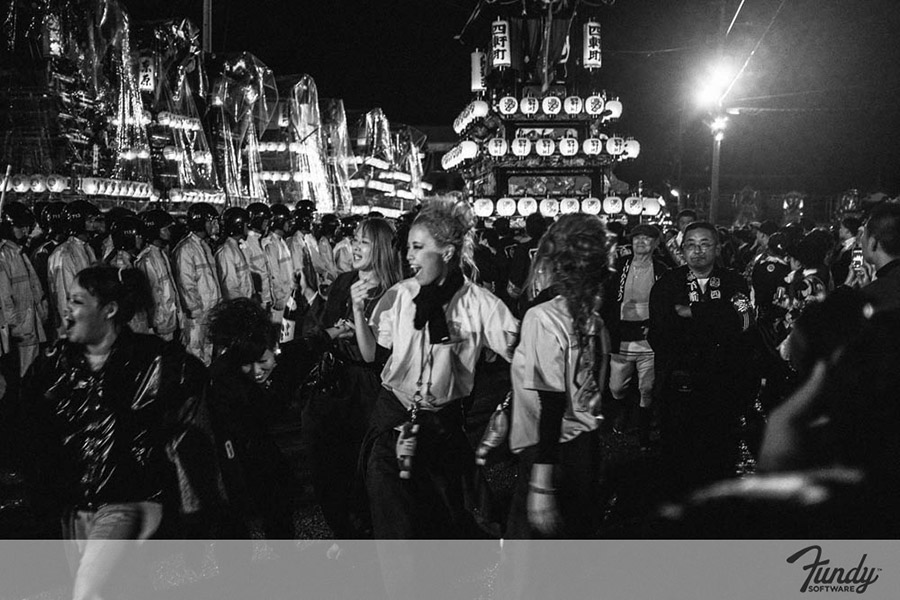
Young women partying away into the night. Riot police in the background. The police were for protection from the speed at which the Mikoshi’s come into the area. Here’s a video that shows that.
[youtube_video] bTpzC37NL9E [/youtube_video]

The Mikoshi’s coming in to the shrine.
Part 2 – Sun Up
In a few hours, around 8 a.m., it’s time to head to Saijo High School, where the former Saijo castle used to stand. Most of the people are still drunk and still drinking. The party is in full swing. It’s not uncommon to see people passed out on the sidewalk at this time.
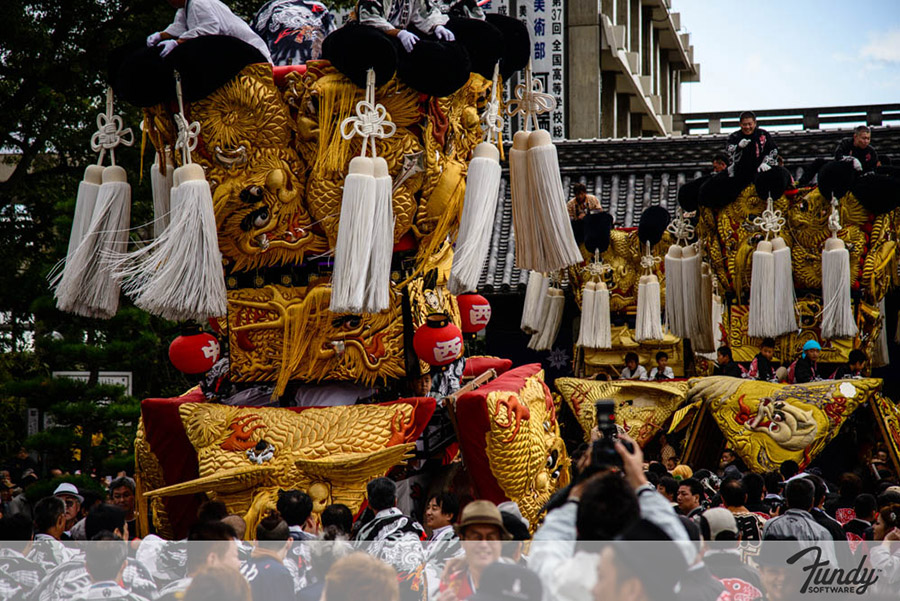
Mikoshi’s crossing the moat. You can’t see it here, but there are only a few feet on each side of the crossing. People do fall in the moat.
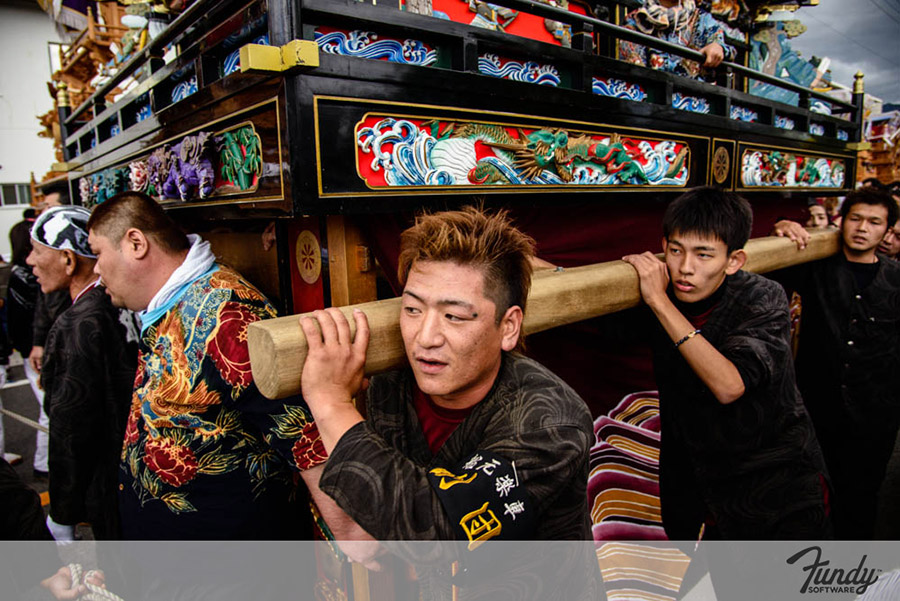
Carrying the Danjiri.

When lifting 1 ton Danjiri’s over your head, accidents do happen. This particular Danjiri is from the Edo period and is over 150 years old.
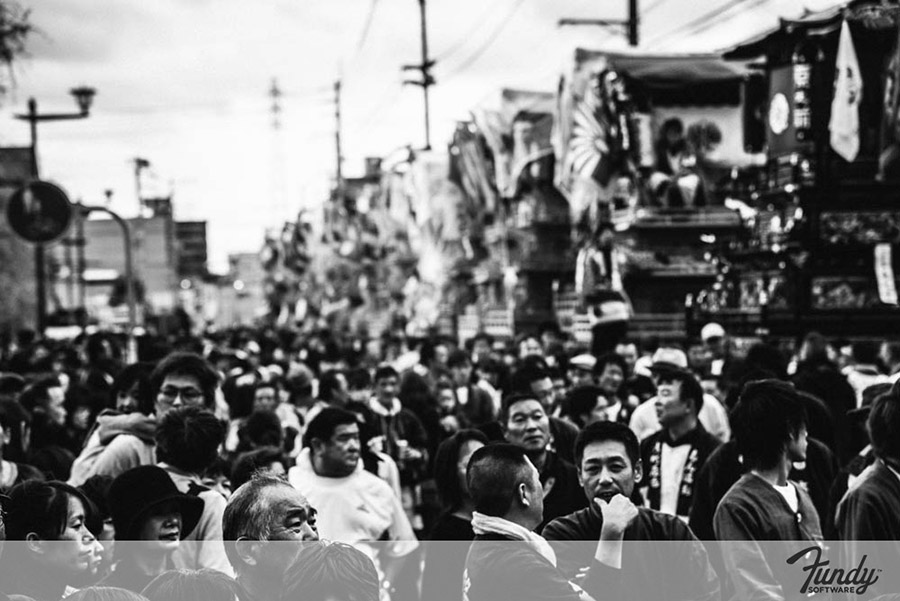
The crowd.
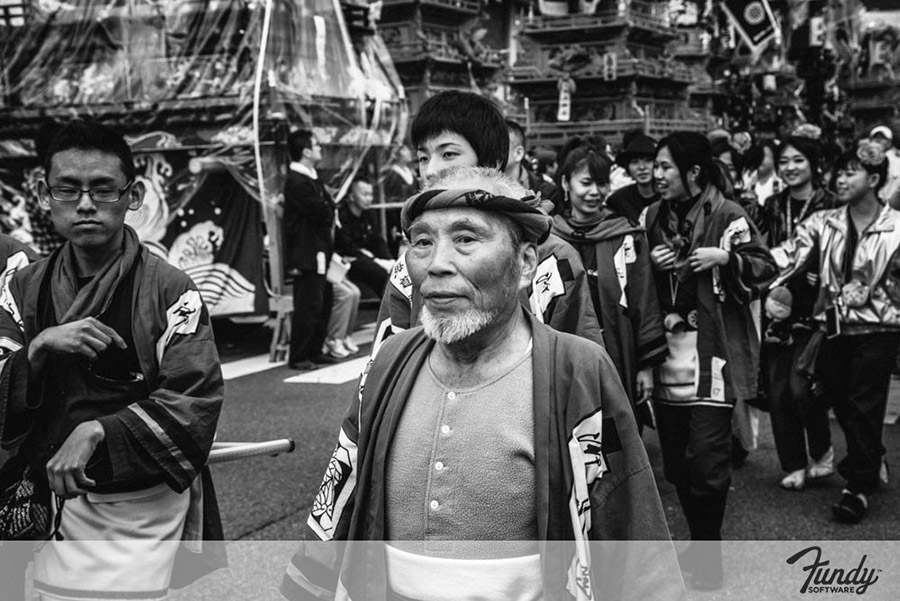
This guy is awesome.
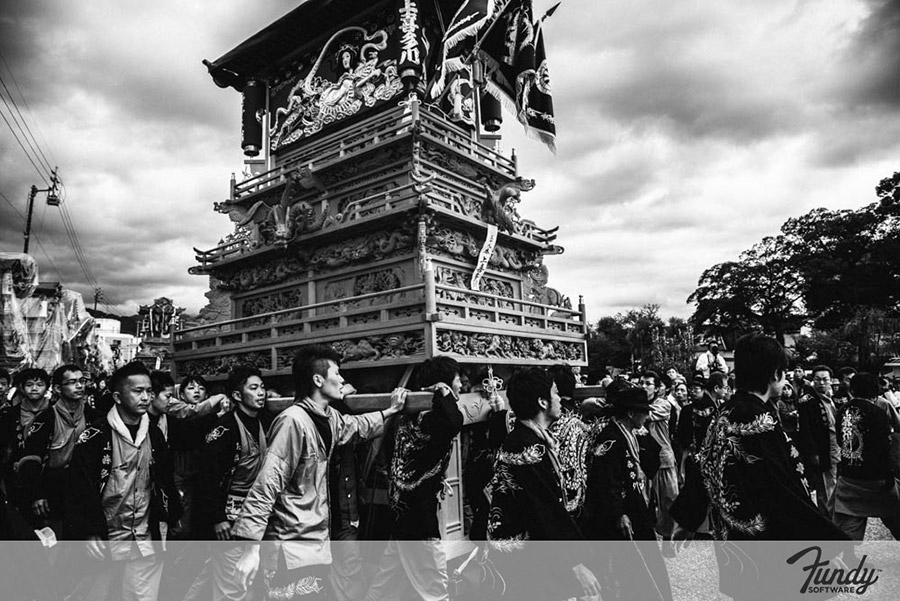
A typhoon was just leaving the area, which made for dramatic clouds.
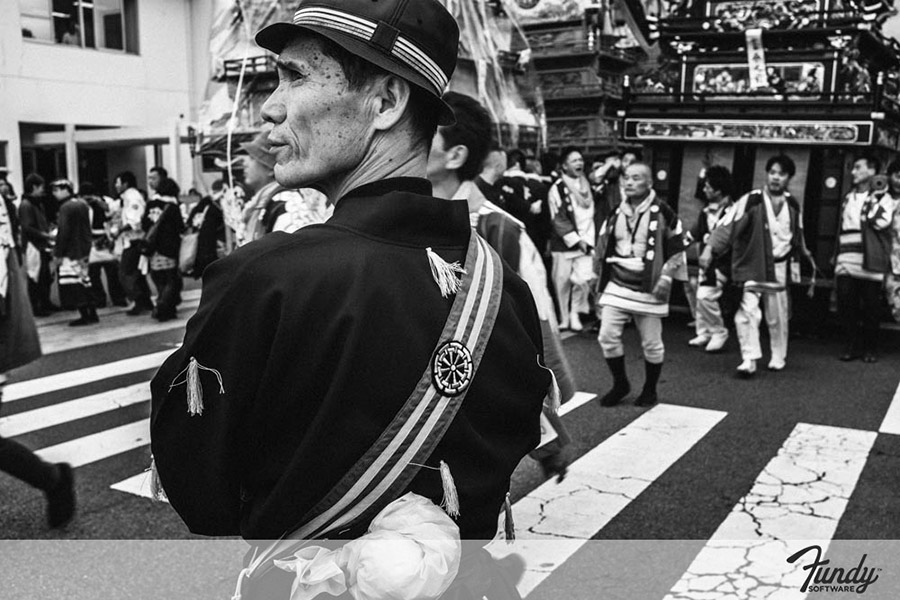
One of the ‘in charge’ guys.
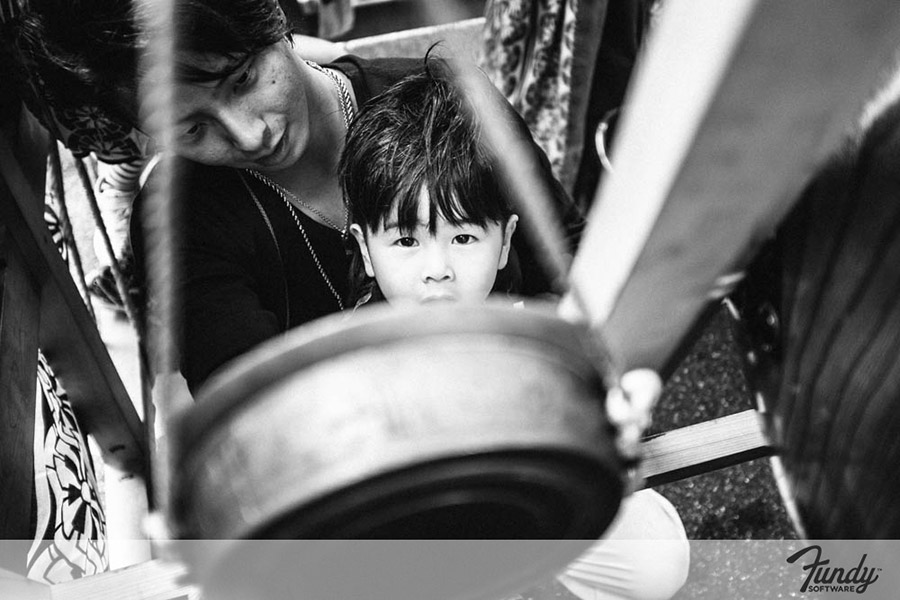
They start early.
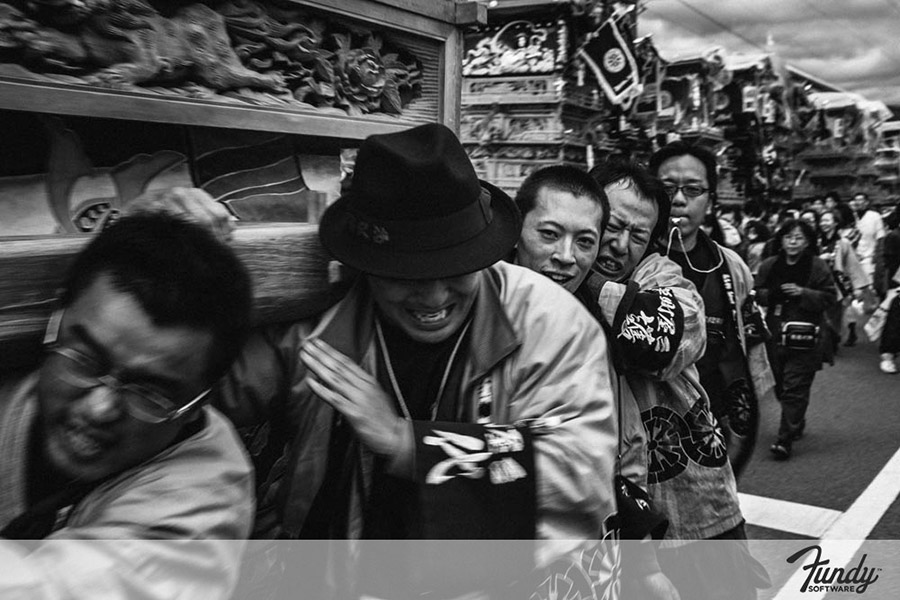
Part 3 – The River
This is the most insane part of the entire festival. The small shrine carrying the god crosses the river (remember there are people carrying this thing). It’s time for the god to go home (back to the big shrine). It starts crossing the river and 5-6 Danjiri try to block it’s way. They want to keep the god with them, a symbolic gesture. So, for about 10-15 min., in the dark, a bunch of drunk guys are carrying one ton shrines in a moving river. It’s insane.
This is not the best video, but it shows the chaos.
[youtube_video] SqEC45fKF2Y [/youtube_video]

Getting ready.
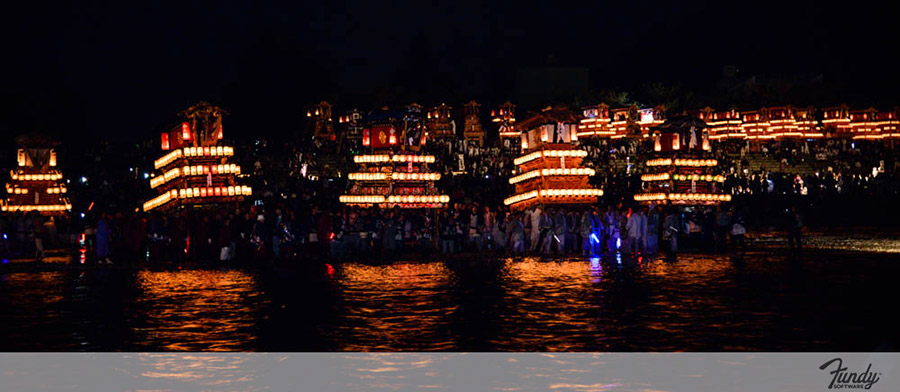
The Danjiri’s lined up.
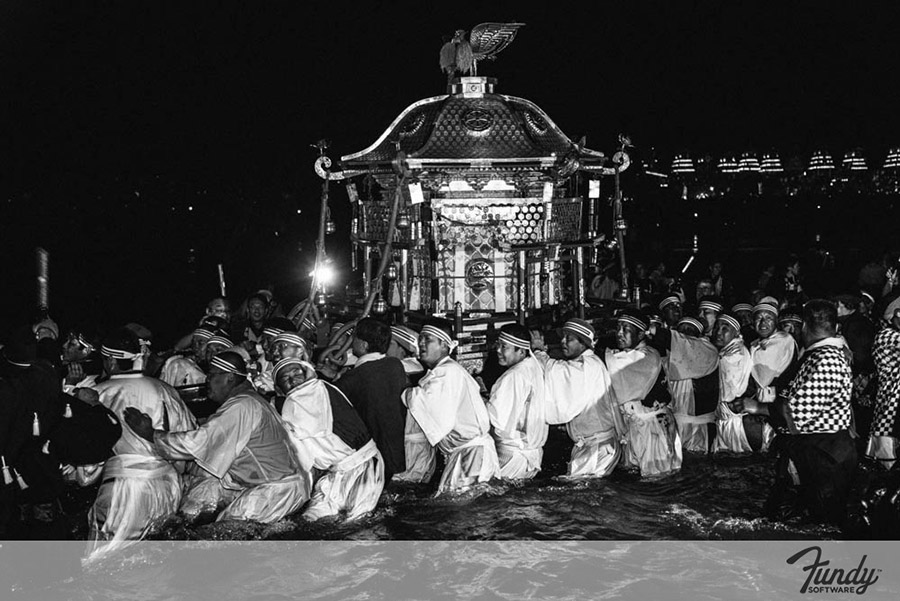
The main god.
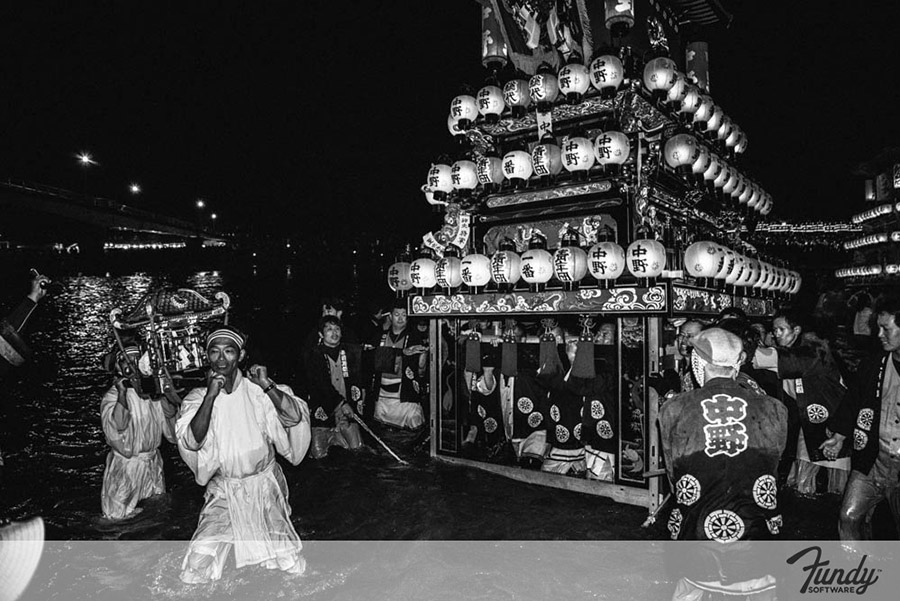
Smaller god.
If you ever get a chance to visit Japan in the fall, be sure to find a good festival to visit. Often the small town ones are the best.




